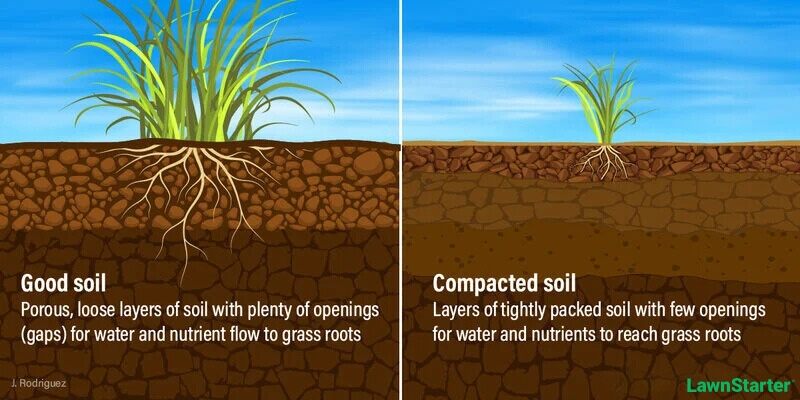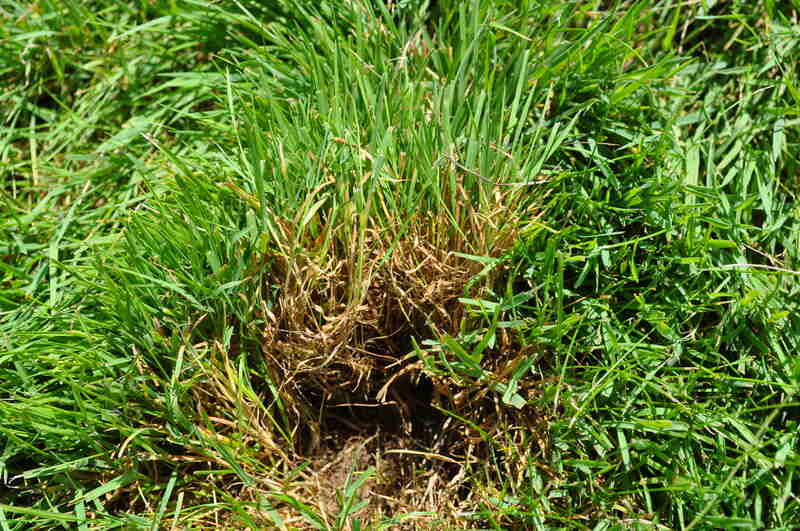
The growing season may end in the fall, but lawn maintenance is an ongoing process, and there are still things you can do to care for your Dallas yard during the cold season.
In this winter lawn care guide for Dallas, learn the tips and tricks to prepare a lawn that will thrive throughout the growing season and intense summer heat, including applying pre-emergent herbicides and keeping your lawn debris-free.
1. Clear Debris and Leaves
Use a rake or leaf blower to clear debris off your lawn. A clean lawn reduces the chances of lawn disease and lawn pests in your yard.
Here’s why it’s important to keep your lawn debris-free:
- Moisture draws pests and fungi: If there are leaves left over on your lawn from the fall drop, clean them up ASAP. Wet leaves trap moisture from frost and winter rains and make a great home for lawn pests and fungal disease.
- Buildup suffocates grass: A buildup of leaves or dead grass can suffocate your grass, blocking access to sunlight and oxygen. You don’t want to stress your grass even more when it’s already at its weakest in winter.
- Messy lawns attract lawn pests and diseases: As the first frost of winter approaches, clearing the lawn of waste, such as tree branches or pet waste, can help keep it healthy and in good condition. Excessive pet waste invites winter lawn pests and diseases.
| Don’t want to deal with the mess on your lawn? With Lawnstarter’s leaf removal service, hire a pro to keep your yard clear of leaves and other lawn debris. Last year, we completed nearly 12,000 leaf removal jobs at an average price of $158 per service and received an average rating of 4.3/5 from our customers. |
2. Minimize Soil Compaction

Compacted soil weakens grass by cutting off the roots’ access to water and essential nutrients. Since your dormant grass is already vulnerable in winter, the last thing you want is to weaken it further with soil compaction.
Here’s how to minimize soil compaction in the wintertime:
- Don’t move heavy equipment across it in the winter. Dragging heavy equipment, such as a lawn mower, across your dormant winter lawn can cause soil compaction.
- Avoid walking on the lawn too much. By minimizing foot traffic, you will protect your soil from compaction.
See Related:
3. Test Your Soil
Winter or early spring is the best time to test your soil. Knowing your soil type and texture will help you determine what types of fertilizer and amendments your lawn needs.
There are two ways to test your soil:
- Extension soil test: Homeowners can request a soil test from Texas A&M AgriLife Extension. You will have to pay a fee and send a soil sample to have your soil tested.
- DIY soil test: Soil test kits are available for purchase at local garden stores. You can also use a DIY ribbon test to determine your yard’s texture and soil type.
Once you have the results of your soil test, use that information from your soil test report to plan your lawn care fertilization schedule for the spring and summer months.
See Related:
- When to Fertilize Lawns in Texas
- How to Prepare a Soil Sample (4 Easy Steps)
- 9 Reasons Why Soil Testing Is Important for the Lawn
4. Apply Herbicides

Once weeds have sprouted in the winter, it’s too late for pre-emergent herbicides to work. Instead, you’ll want to hand-pull these weeds. Make sure to dig out all the roots, since certain perennial weeds can grow back if their roots are left intact
If you don’t want to hand-pull the weeds, you will have to wait until spring to apply a post-emergent herbicide.
Watch out for these common winter weeds in the Dallas area:
- Annual bluegrass
- Chickweed
- Henbit
- Rescuegrass
In preparation for spring, pre-emergent herbicides should be applied when soil temperatures reach 50 to 55 degrees F, which is usually in mid- to late February. Pre-emergents prevent summer weeds from growing in your yard in the spring, which will save you the hassle of dealing with weeds later.
See Related:
- How to Apply Pre-Emergent Herbicides
- 7 Best Pre-Emergent Herbicides for Lawns
- Guide to Weed Control in Your Yard
5. Water During Dry Spells
Generally, once your grass goes dormant, you will not need to water your lawn. However, if there is a long dry spell with less than 0.5 inch of rainfall, you should water when temps are above 40 F. Irrigate dormant grass with 0.5 inch of water once or twice a month to keep it from drying out.
See Related: How to Water Your Lawn in Fall and Winter
FAQ About Winter Lawn Care in Dallas
Dallas’s warm-season grass types enter a dormant state in the winter, so they turn tan or yellow. Don’t worry, though, they aren’t dead. They’re just resting and preparing for a new season of healthy growth come spring. The grass should begin to green up again once temperatures rise.
Apply a modest rate of nitrogen to Texas lawns once in the spring and again in the fall, no later than 6 weeks before the projected first frost. Do not fertilize your grass during the winter.
Warm-season grasses, which are common in Dallas, typically go dormant after temperatures stay consistently under 65 F. When the grass goes dormant and seems to stop growing, that’s your cue to stop mowing for the winter until it greens up in spring.
Make Lawn Care Easy: Hire a Dallas Lawn Care Pro

Although the growing season stops in the wintertime, there are still some lawn care chores on your to-do list that you need to take care of, such as maintaining your lawn care equipment, clearing debris out of your yard, and applying pre-emergent herbicides.
That takes time – which you may not have. From Bermudagrass to St. Augustinegrass or any other type of grass our Dallas-area lawn care pros can handle all your mowing and lawn care chores.
LawnStarter’s Dallas-area lawn care services are also available in Irving, Arlington, Richardson, and Plano. Use our app to book LawnStarter’s 20+ lawn care, landscaping, tree care, and other outdoor services.
See Related:
- 12 Spring Lawn Care Tips for Dallas
- How to Ensure Your Dallas Lawn Survives the Summer Heat
- Guide to Fall Lawn Care in Dallas
- How to Winterize Your Southern Lawn
Main Image: Dallas Arbitorium and Botanic Garden in Winter with the city’s skyline in the distance. Photo Credit: Philip Armitage / Adobe Stock